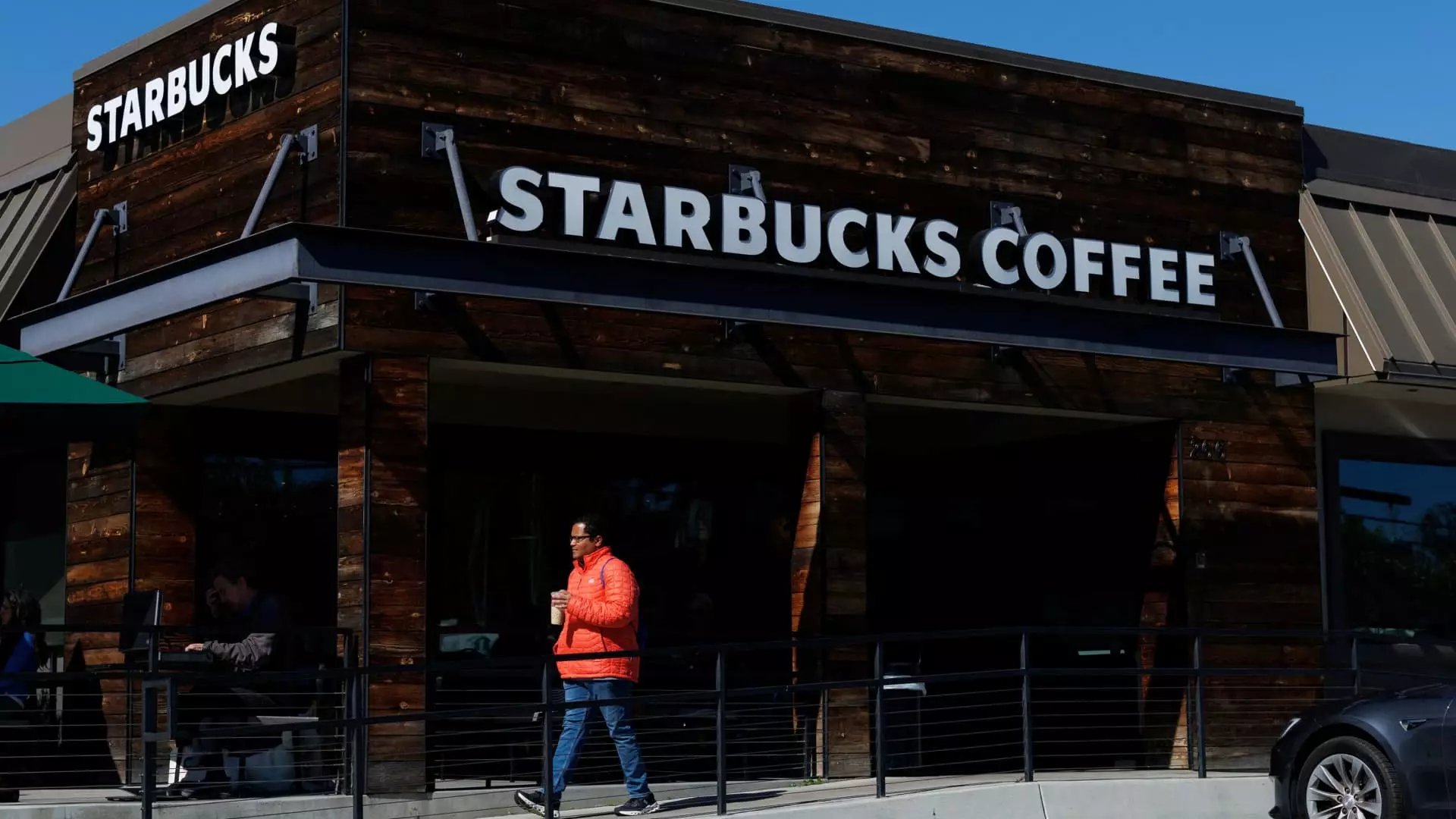As the smoke and mirrors of market optimism clear, restaurant stocks present a terrifying picture—one that investors can’t afford to ignore if they wish to protect their wallets. Recent trading spells catastrophe, as fears of an impending recession gnaw at investor confidence. The tremors are being felt across the food service industry, particularly in a sector that prides itself on resilience and adaptability. With U.S. stocks having plunged for three consecutive days, the signs of economic distress cannot be brushed aside. The catalyst? President Trump’s unexpected introduction of steep tariffs on goods imported from crucial trading partners, an act that has sent shockwaves through the rich tapestry of the restaurant landscape.
Inflation: The Silent Killer
While analysts like UBS’s Dennis Geiger assess that the immediate impact of tariffs on restaurant chains remains “manageable,” they overlook a more insidious threat. The looming specter of inflation acts as a silent killer for consumer spending and restaurant demand. It’s not just the direct cost of tariffs that should raise alarms but rather the trickle-down effect that will squeeze consumers’ disposable income. Higher coffee costs and other essentials are not merely economic terms—these figures represent real dollars that consumers will have less to spend on dining out.
Investors should consider that food options are not just commodities; they are woven into the fabric of social fabric and family experiences. As inflation rears its ugly head, we will likely see consumers retreating from dining experiences, a move that could suffocate an already beleaguered industry. This isn’t merely speculation; it’s grounded in the harsh realities faced by restaurants during economic downturns, where discretionary spending is the first to be cut.
Starbucks’ Struggles: More Than Just a Caffeine Fix
Starbucks, a giant in the coffee shop sector, is an emblematic case study of how macroeconomic trends can derail a once-flourishing business model. Despite its brand strength, the café chain has suffered a staggering stock decline of nearly 20% since Trump announced tariffs on coffee-exporting nations. Analysts have cited factors like rising coffee prices and escalating anti-American sentiments as key contributors to their woes. But the real question remains: can Starbucks adapt when the very essence of its product is at risk?
The implications of trade tensions are magnified in international markets where consumer loyalty can vacillate based on political climates. With China being Starbucks’ second-largest market, the potential for a backlash against American brands due to rising geopolitical tensions paints a grim forecast for the coffee titan.
Casual Dining Chains: In Deep Water
Casual dining chains, once symbols of the American dining culture, are not faring better. Brands like Dine Brands, which operates Applebee’s and IHOP, recorded nearly 3% drops in share value—a telltale sign that the tides are turning against dining establishments that thrive on moderate-priced family meals. Rivals such as Darden Restaurants and Texas Roadhouse succumb to similar pressures, bearing witness to a collective movement towards a more frugal dining experience.
Fast-casual dining options, which have seen increased investment interest, are not immune either. Brands like Chipotle and Sweetgreen—often hailed as rising stars—are facing stock declines, emphasizing a broader market skepticism toward all sectors of the restaurant industry.
Fast-Food Chains: Stuck in a Paternalistic State?
Fast-food chains, traditionally seen as the safety net during economic downturns, are also feeling the heat. Stocks for icons like McDonald’s, Yum Brands, and Restaurant Brands International have witnessed downturns, which raises eyebrows given the historical context. It suggests that even the lowest-cost dining options are no longer off-limits in a tightening economy.
Last year’s consumer spending pullback saw quick-service restaurants grappling with severe challenges as low-income consumers reduced their visits while affluent customers maintained their dining habits. This uneven shopping behavior suggests not only an economic crisis but an existential crisis for fast-food chains that bank on serving low-price meals to retain consumer loyalty. Paradoxically, those who usually patronize fast food in lean times are being squeezed most.
Future Hurdles: Innovate or Die
In this climate of tremors and uncertainty, only those who innovate and adapt will survive. Brands like Dutch Bros have shown slight resilience with a stock gain despite turbulent conditions. The delicate balance between cost management and maintaining a loyal customer base will determine who comes out on top in this restaurant stock fallout. The industry is at a crossroads, groaning under the weight of economic tensions and consumer uncertainties.
What resides ahead is a complex narrative of struggle, resistance, and inevitable transformation in the restaurant sector. Those who dare to embrace change and seek innovative solutions will likely drive the next chapter in this unfolding saga of the dining experience.

